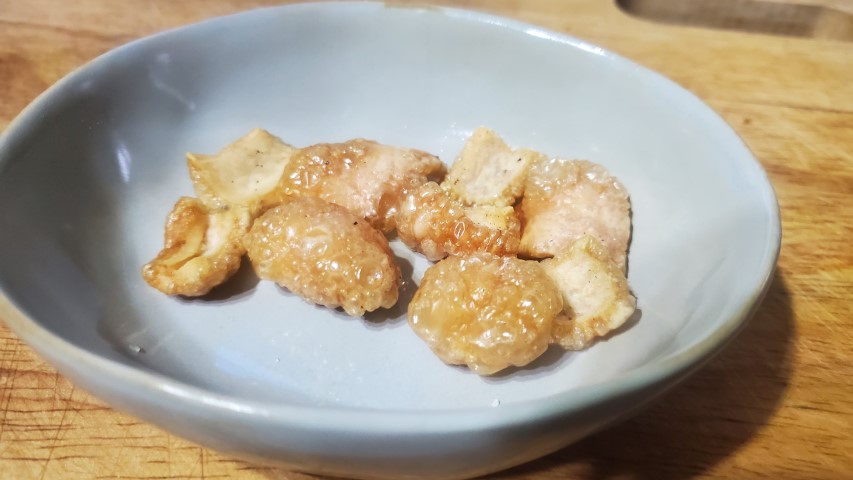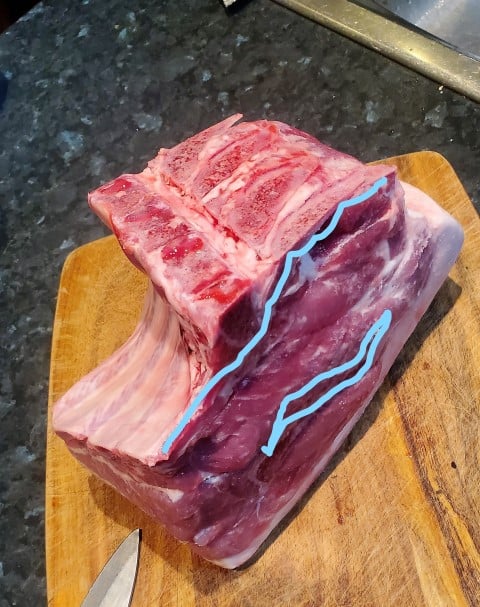People often feel overwhelmed by the idea of butchering their own whole cuts of meat and are driven by convenience to buy pre-cut and prepackaged options.
However, I want to emphasize that it’s not as complicated as it seems, and I’ll share some ways to butcher whole cuts that can help you save money and develop a deeper understanding and appreciation for well-prepared meat.
By breaking down larger cuts of meat, you can enjoy greater cost-efficiency. By taking on the task of butchering yourself, you can avoid labor costs. The front and back legs of animals such as pigs, lambs, sheep, venison, or bovines are particularly suitable for this practice. Poultry, including chickens, can also be cost-effectively butchered at home.
By embracing the concept of butchering your own meat, you can significantly reduce your expenses. Additionally, I will shed light on the marketing tricks employed by supermarkets, which often result in you paying more and saving less.
With over 20 years of experience in butchering animals, as well as seaming and deboning meat from butchers and supermarkets, I can assure you that cooking mistakes are not catastrophic. At worst, you might end up with slightly more sinew or fat, but it won’t ruin the final cut.
When you first start out, it’s important to exercise caution around bones, as accidentally chipping off cartilage or bone fragments can make digestion a bit more challenging.

In this article, I will highlight various cuts of whole meat you commonly encounter in supermarkets or butchers. I will explain each cut and provide insights on how you can save money by utilizing them from my experiences.
Ultimately, the cooking method you choose will depend on your preferences, whether you prefer quick cooking methods like grilling or slow cooking to tenderize the meat through braising, roasting, or smoking.
Regarding meat, there are also opportunities for curing, and I will highlight some of the easiest and cost-saving methods that can yield valuable products.
Meat can be categorized as tough or soft, and I will touch on other elements like bones and skin as well.
All you need is a decent knife, it doesn’t have to be a boning knife, but something with a flexible blade would be good (not serrated, obviously).
It may also mean the meat is fresher since the surface area hasn’t been exposed as much as sitting in a wrapped-up package.
Please note that this article will provide a simple overview of my personal approach and is not intended to be a complete professional butchery course. I aim to share helpful tips that have worked well for me (here is another article on pig butchery I wrote).
Saving Money by Butchering Your Meat
Whether it’s beef, lamb, or pork, these meats can be transformed into multiple servings and different cuts that offer diverse preparation options.
I will primarily focus on the front and back legs of 4 legged animals since they are the most commonly available whole meat muscles at supermarkets and butchers.
Another important tip to keep in mind when breaking down red meat (tips for game meat sausage here) or pork is the need to trim gristle and sinew. These firmer fibers can become chewy once cooked.
Pork shoulder or pork butt is likely the most common type of meat muscle that can be deconstructed in various ways.
The meat quality is always essential to consider, as the animal has given you life for consumption. It’s crucial to honor it as much as possible.
A useful guideline for meat consumption is that a small lump of meat that fits in the palm of your hand is approximately the right serving size.
It’s interesting how meat consumption has often been associated with masculinity, and this perspective comes from someone who engages in hunting, foraging, and gathering activities.
Different Meat to Butcher at Home to Save Money
My focus here will be on what is generally available in bulk, from what I’ve seen from my experiences in Europe, South Pacific, and North America.
I’ll talk about:
- Chicken
- Pork
- Beef Rump
Although I’ve butchered venison(deer), rabbits, hare, turkey, pheasant, duck & tahr for quality meat, it’s also economical if you successfully harvest it!
Whole Chicken Cuts to Save Money
I’ve found that it’s one of the easiest meats to dissect. For any of these cuts of chicken, you can save money and cook them in various ways:
- Fry, Stir Fry
- Simmer
- Roast/Bake/Air fry
- Grill/BBQ
Chicken Breast
I’ve found it better to pan-fry or grill outdoors since the breast is a leaner cut of meat from the chicken.
Drumsticks
Fry, bake, air fry, or debone them—you have many options with drumsticks. Pan-frying drumsticks with a bone in the middle should be done on lower heat. Chicken drumsticks or wings are not ideal for grilling due to the need for frequent turning and management when using direct heat. Precooking them before grilling or using indirect cooking methods like Low and Slow are good tips.
Wings
Wings can be cooked similarly to drumsticks.
Thighs
Fry, bake, or air fry are my preferred methods for thighs. Thighs hold quite a bit of fat, so they are forgiving to cook and hard to overcook.
Bones
Whether they are leftover bones from drumsticks or the main body frame after removing the meat groups mentioned above, save them in ziplock bags in the freezer. Once the bags are full, you can use the bones to make stocks, broths, or soups.
Parts and Cuts of Pork to Save Money
- Pork Shoulder
- Pork Hind/Back Leg
- Pork Loin
- Pork Bones, Knuckles, Shanks, Hocks
- Hoofs
- Pork Head
- Pork Offal
I often buy shoulder or leg meat whole, and here’s how I break it down to save money or utilize it differently:
Pork Shoulder / Pork Butt (Bone-In or Bone-Out Cuts)
The pork shoulder and pork butt are essentially the same thing and are commonly found as large chunks in Western supermarkets. The shoulder of the pig usually contains about 25-30% fat, making it versatile for various types of cooking, including curing and smoking.

Pork shoulder can be used for:
- Mince/ground meat (patties, sausages, salami, baked dishes like lasagna or chili con carne)
- Cubed for stew, casserole, or curry
- Chops/Steaks for fast frying
- Bones for stock or broth
- Whole or parts of the shoulder for pulled pork or hot smoking
- Tenderized slabs for schnitzel
Pork chops can come from the shoulder area, moving back toward the hip area of the pig.
Pork Hind Leg
Unlike the shoulder, the pork leg has meat on the inside and fat on the outside. It consists of a large mass of meat muscle surrounded by fat and skin. In the middle is a bone, and the lower leg can be considered a shank/knuckle or knee. Generally, the hind leg is leaner than the pork shoulder (though it may vary depending on the pig).
Pork leg can also be made into steaks, but it is less forgiving because it’s lean, making it tough if overcooked. It’s crucial not to overcook pork, as it can cause the muscle fibers to become tough.
Whole Pork Loin
Hunters refer to the loin as the “back steak,” running from the back of the head to the top of the hind leg, on either side of the spine. You can use the loin to make Italian or Spanish dry-cured meats such as Coppa, Lonzino, or Lomo. I make these at home.
Loin Steaks
You can again slice whole loins into steaks, and freeze in slices – a way of saving money on the whole or half loin.
Tenderloins, outside of the gut cavity, and another side of the ribs from the loin, this muscle doesn’t move a lot, Italian do not believe this muscle has a lot of flavors, each person has their own preference! No judgment here.
Beef Rump to Save Money
Here is a much better resource of the various cuts you can do with beef rump, I will list the cuts here:
- Sirloin Steak
- Picanha
- Bistro
- Tri-Tip
- Rump Steak
- Rump Roast
The videos show other slight variations and more simplified ideas below.
And here is a more general way, a little simpler, with more fat.
Other Farmed/Wild Animal Parts Shanks, Knuckles, and Hocks
- Lamb
- Venison
- Beef
- Pork
Braised and slow cooking is the primary way of enjoying the lower leg muscle/bone of an animal.
Lots of tough sinews, collagen, and many different muscles wrapped around these parts of the 4 legged animals.
Long, slow cooking is the way.
As I said before, this isn’t a comprehensive guide on breaking down animals for cost savings, it is more about tips related to how I do it at home regularly.
For an introduction in to curing meat for flavor and preservation here are some other articles I wrote:

Tom Mueller
For decades, immersed in studying, working, learning, and teaching the craft of meat curing, sharing the passion and showcasing the world of charcuterie and smoked meat. Read More
